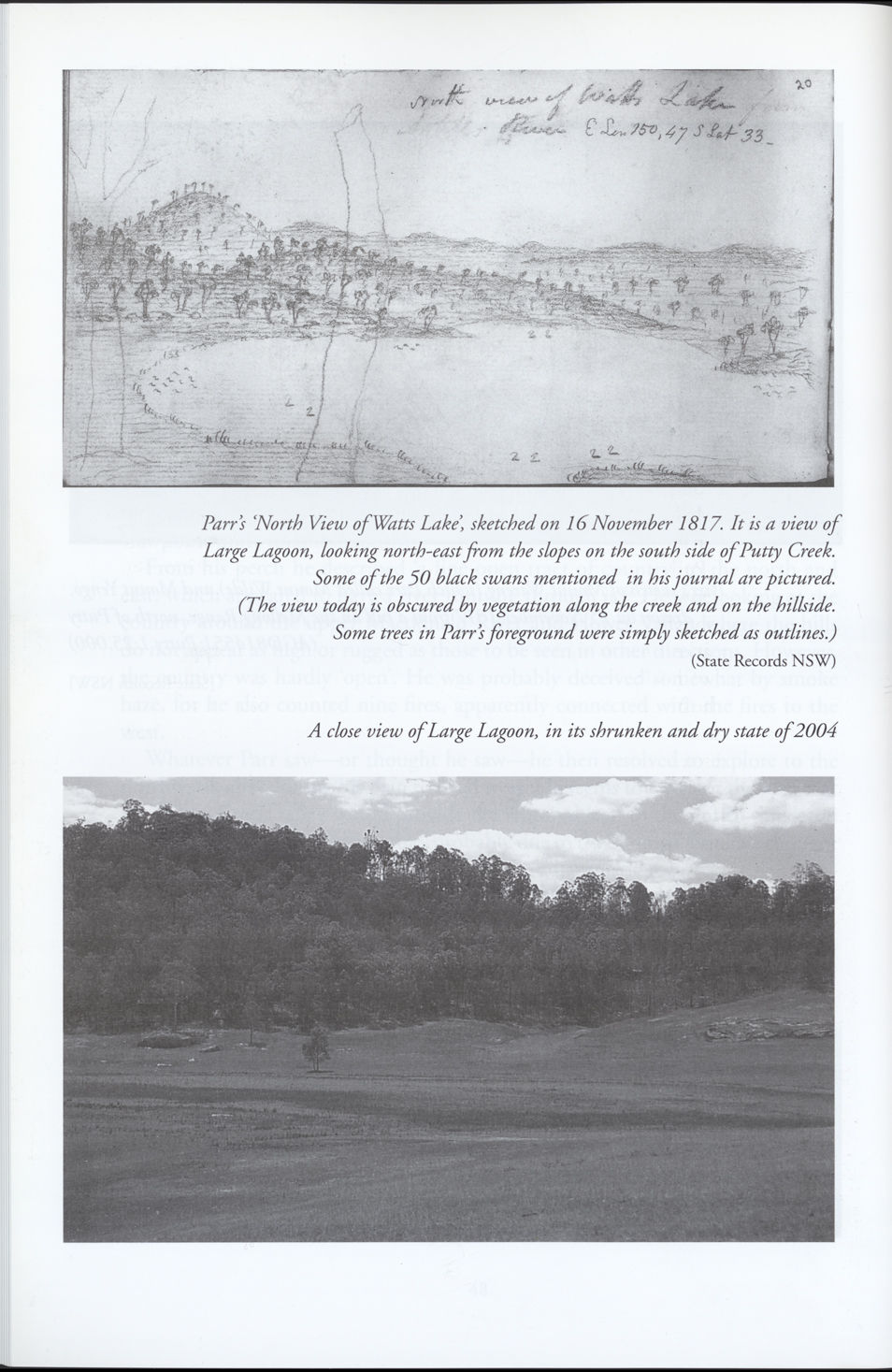[Thomas] William Parr was a land surveyor, draughtsman and mineralogist. He had been convicted of forgery at the Kent Assizes in Sandwich on 6 August 1812, and arrived in the Colony aged 39 with a 14 year sentence on the Fortune in 1813. Macquarie was quick to make use of his skills and he was assigned to the Surveyor General’s Department as a mineral surveyor. He was soon granted a ticket of leave, and was selected to accompany Oxley on his expedition to the Lachlan in mid-1817.
Although the party saw a huge valley to the north and east of them on 17th November, which might have been the Hunter Valley, Singleton was unhappy and had already turned back. Parr turned back soon afterwards and returned to Windsor, not realising how close he had come to discovering his way through to the Hunter.
After obtaining a free pardon on 25 October 1821, he was involved in a variety of mercantile pursuits before his departure for England on the Berwick on 10 January 1824.
Parr’s remarkable journal, still in its original cloth binding, is a rare account of an expedition undertaken by a convict explorer.
Source: NRS 898 Colonial Secretary: Special Bundles 1794-1825. Journal of a journey from Windsor to the North, 30 Oct-29 Nov 1817, probably kept by William Parr [2/3623, pp.36-38], Fiche 3271
TRANSCRIPT
[Extract: pages 36-38, 17-19 November 1817; and page 20, sketch of ‘Watts Lake’ referred to on p.37.]
And the grass was breast high
on my return I got upon a Range
of Hills to the Nd & Ed and thought
by proceeding in that direction I
should head the Fires, but I was
obliged to return a second time
as the flames were rageing in
the Hills, marked Red on the
Chart. I then halted in a very
rich valley where kangaroos were
in flocks we saw a Number
of Natives this Day generally
about the skirtts [sic] of the flames
I sent one of my men to them
in hopes of getting some information
from them, but on his hailing
about Twelve of them, all the
Notice they took of him was
Coo,ee
Tuesday 18th Nov 1817
I now determined upon shapeing
my course for Bathurst and halt
ed at the meeting of the Nine [written over eight erased] Hills
37
in a very rich valley, I cannot
avoid stateing that I never saw
any Land so picturesque & fine
in all my travells the surfaces
is, as if covered with fine young
wheat and not a Bush, nore a
bough of a tree to been upon
it in the points of the Hills all
have a gradual side and are cov
ered with the same verdure up
to the very ridge the trees which
are apple & gum are very thin
upon the Land, but the Apple
trees are the Largest I ever saw
I measured three the circumferences
of which were, One 23 feet 6 inches,
the others 22 and 20 feet they are
also extremely tall
on passing the Lake which I call
Watts Lake* I was surprised to see
about 50 Black swans upon it
with Hundreds of Ducks, and a
38
kind of Bird I never before saw
it was about the size of a Muscovy
Duck very dark brown and its Head
was nearly as large as its Body
Wednesday 19th Nov 1817
Proceeded upon a chain of Hills running
to the Sd & Wd but on arriving at the 6th
station we saw smoke & flames
to the westd which ruined a great
extent of Land, and in reaching
the 13th Station I clearly discovered
an extremely rich valley, with a
River running through it, but the
flames raged to such a height
both in the valley and upon the
the Hills on each side it, that I
dared not venture any further
the flames often were seen above
the trees, which were very tall
At intervals I caught a slight view
up the valley which appeared to run
nearly NW could I have proceeded
up this valley I have no doubt
that I would have made Bathurst
———————————-
* today’s Large Lagoon

State Records wishes to thank Andy Macqueen for permission to make use of his detailed research, and the transcription of Parr’s Journal, reproduced in his book Somewhat perilous (919.445/MAC in State Records’ library).


